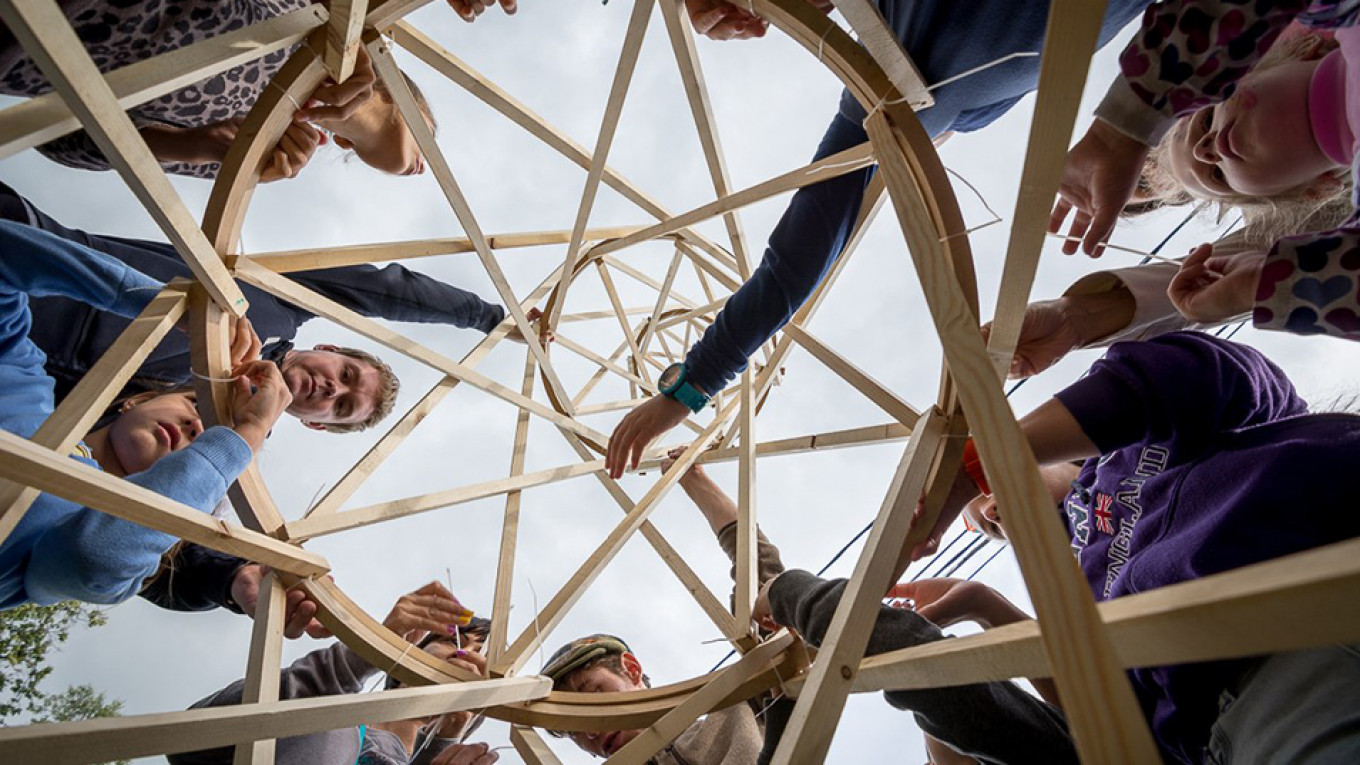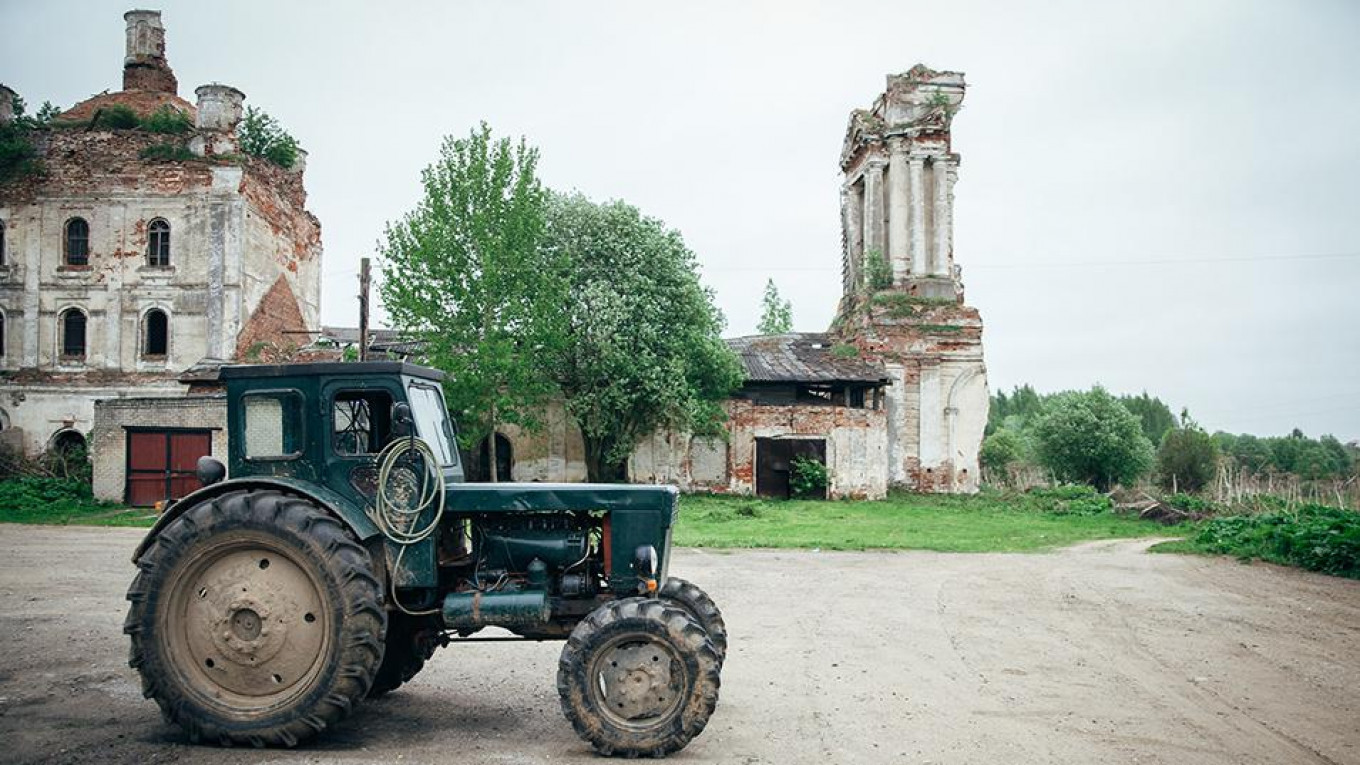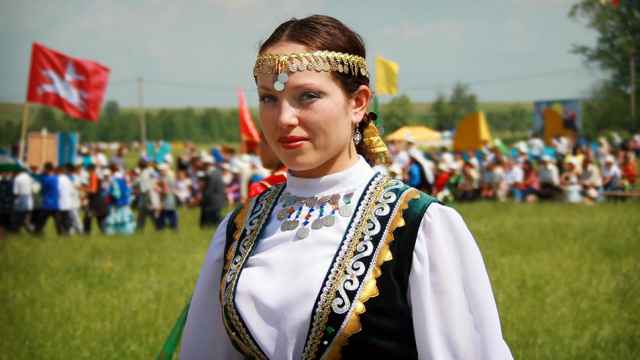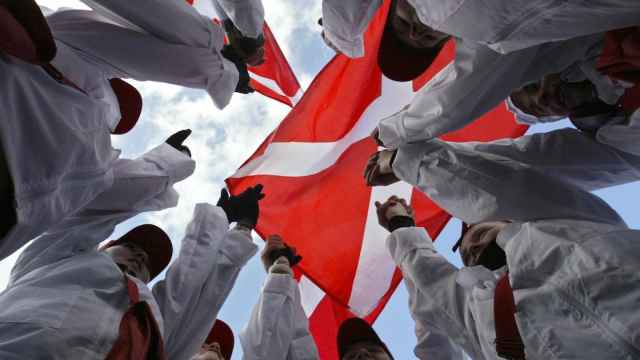Collapsing churches, forgotten railway tracks overgrown with grass, abandoned factories and warehouses, monstrous and dilapidated Soviet apartment blocks, derelict ruins — all are part of a not-so-distant past that many Russians are happy to forget. These things are ugly, the thinking goes, and maybe even a bit unsettling and haunting. They’re hardly the stuff for tours and excursions.
Fortunately, there has been a colossal shift among many young Russians — and certainly a new generation of Muscovites — over the last decade in how they view their country’s architectural and cultural heritage. Instead of viewing these things as relics of a past that they would just as soon forget, they see a haunting beauty in them, as well as mystery. There are stories in these buildings and among these abandoned railway tracks — rich stories about how people lived and worked in Russia’s past.
Three years ago, Mikhail Konchits initiated the Russian Heritage Railways program with some friends through a successful crowdfunding campaign. The company now offers highly original tours and tour packages around Moscow and throughout Russia. Many of the tours involve riding on old trains or following old train routes, but they all involve a unique perspective on Russia’s past.
For example, Russian Heritage Railways regularly organizes tours of the industrial Elektrozavodskaya line, a series of abandoned tracks in northeast Moscow — a far cry from Red Square. The group spends a few hours walking along the tracks, admiring the beauty of the arching trees that form a tunnel over the tracks. They discuss the history of this line of industrial railway and what it meant to the life of the city. They look at nearby factories, some still functioning and some not. They take in the rich and intricate mix of natural and industrial beauty.
Konchits, a former student of geography, was drawn to the old railway lines and lamented that they were not preserved for history as in other European countries. In fact, they were in danger of being pulled up. “I wanted to raise the interest of the people here and to save the tracks from being scrapped,” he said. He marveled at the railways and the stations from the late 19th century and early 20th century. “They keep their atmosphere from that era. There’s no interest in them because nobody knows about them.”
In its year-and-a-half of full operation, Russian Heritage Railways has enjoyed growing interest and participation. The scope of its excursions has broadened while trying to keep railways as a central focus. There are unusual tours of industrial Moscow on 40-year-old buses. You can visit Soviet cookie or perfume factories, for example. There are also longer trips that take several days. You can go the Voronezh region to enjoy the nature along its rail lines and visit a business that makes Russia’s traditional felt boots. Or you can spend a few days visiting towns and villages in the Kostroma area that are undergoing unique revivals, such as Astashovo, Chukhloma, Soligalich and Galich. Or you can go about two hours north of Moscow and explore the region’s gorgeous wooden houses, the solitary belfry of Kalyazin, Kashin, Bezhetsk and an old winery in Vesyegonsk.
Constructivism and preservation
Only a little over a decade ago, Moscow’s architectural preservationists were in a near state of disrepair. City Hall was overtly contemptuous of such efforts, and the concept of “preservation” among city officials was basically tearing down an old building and replacing it with a replica. Moreover, Muscovites seemed generally disinterested in the subject. Even the decaying constructivist masterpiece Narkomfin (completed in 1930) sat abandoned and rotting, apparently moribund like so many great Moscow buildings. City Hall joked that putting up a huge shopping mall beside it shielded residents from seeing the lousy ruin.
Because of the new generation of Muscovites deeply interested in the city’s constructivist past, however, Narkomfin is now well-known and celebrated — and, most importantly, in the process of massive renovations.
Four years ago, a young engineer, Airat Bagautdinov, decided to mesh his love of research and history with his professional interests. This meant leading a new kind of tour through Moscow. He founded a tour group called Moscow Through an Engineer’s Eyes.
“I was figuring out what was going to be the most interesting subject for me,” he said. “I have a degree in civil engineering. I told myself, why don’t you do the history of civil engineering and the history of structural engineering in Moscow?” He began offering tours of Narkomfin and other monuments of Russian avant-garde architecture and Soviet utopian buildings. He focused on how the buildings were constructed, offering their history in the context of engineering. The organization now offers guided tours with special virtual reality glasses.

As the Engineer’s Eyes tours grew more popular, Bagautdinov branched out into English-language tours and co-founded Archigeek. Archigeek offers a variety of tours in and around Moscow by foot or bus or even bicycle. More traditional tours are available — the Kremlin, Red Square, the metros — but it also offers more unusual ones highlighting Moscow’s avant-garde and art nouveau: tours of Narkomfin, VDNKh, the Metropol Hotel and the Pertsova House, for example. One tour highlights the work of the legendary Russian engineer Vladimir Shukhov (1853-1939), whose pioneering advances assisted the constructions of the Melnikov House, GUM and the Pushkin Museum of Fine Arts.
Stalinist architecture has very visibly left its mark on the city. The era’s skyscrapers are internationally recognized symbols of Moscow, subsequent only to the Kremlin and St. Basil’s. But the stories behind their constructions are incredible, and a tour of these skyscrapers is well worth the time. Tours that focus on Stalin-era buildings include looks at the Foreign Ministry, Tverskaya Ulitsa, Moscow City Hall, the Crimean Bridge, Gorky Park, the VorobyovyGory Panorama and Moscow State University.
Archigeek also offers trips outside of Moscow. Groups can enjoy the “dacha experience” or a trip to the Pines, a sanatorium built in 1934 in the avant-garde style. There are excursions to the Shukhov Water Tower in Polibino, built in 1927 and the world’s first hyperboloid structure — you will need an engineer to tell you what that means. (You can even climb to the top.)
Part of Bagautdinov’s mission is to develop wider Russian and international appreciation for a more diverse scope of the city’s rich architectural heritage. For those who want to see more of the variety of this heritage, he recommends visiting the Ivanovskaya Hill and Khitrovka area near the Kitai-Gorod metro, or the Zamoskvorechye neighborhood and the area around Patriarchs’ Ponds.
For more information about Russian Heritage Railways, see the site.
Tours can be booked in Russian and English at Moscow Through the Engineer’s Eyes.
Tours and information for Archigeek can be found on their site.
A Message from The Moscow Times:
Dear readers,
We are facing unprecedented challenges. Russia's Prosecutor General's Office has designated The Moscow Times as an "undesirable" organization, criminalizing our work and putting our staff at risk of prosecution. This follows our earlier unjust labeling as a "foreign agent."
These actions are direct attempts to silence independent journalism in Russia. The authorities claim our work "discredits the decisions of the Russian leadership." We see things differently: we strive to provide accurate, unbiased reporting on Russia.
We, the journalists of The Moscow Times, refuse to be silenced. But to continue our work, we need your help.
Your support, no matter how small, makes a world of difference. If you can, please support us monthly starting from just $2. It's quick to set up, and every contribution makes a significant impact.
By supporting The Moscow Times, you're defending open, independent journalism in the face of repression. Thank you for standing with us.
Remind me later.







